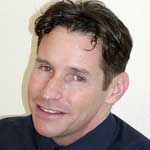-
- Civil unions author lauds California DP bill
- Constitutional marriage amendment debated in U.S. Senate
- Ban predicted in Mass. if high court legalizes gay marriage
- ROTC student loses $40,000 over ‘don’t ask, don’t tell’
- Supreme Court asked to grant custody to lesbians
- Merck testing AIDS vaccine on humans
- Durham first N.C. county to offer same-sex bennies
- University allows antigay web log on school’s server
- National News Briefs
- World News Briefs
commentary
Gays and stereotypes on TV
Published Thursday, 11-Sep-2003 in issue 820
BEYOND THE BRIEFS
GLBT leaders in the next generation may look back at TV shows like “Will & Grace,” “Queer as Folk,” “Queer Eye for the Straight Guy” and “Boy Meets Boy” and wonder how we not only watched these shows, but giddily heaped praise on them. Some argue that these shows merely perpetuate negative stereotypes of gay men — in particular, as flaming sissies. The character of Brian Kinney on “QAF” draws the most criticism for his sexual relationship with a minor, reinforcing a negative stereotype that gay men prey upon children. The show’s non-existent bar, Babylon — with its infamous backroom — also reinforces a negative myth that all gay men go to bars, baths and the like, where casual sex and drug use run rampant.
The irony in all this is that every minority group has, at one time or another, complained about negative stereotyping on television (and radio).
The American Italian Defense Association (AIDA) sued Time Warner over its portrayal of Italian-Americans in various episodes of “The Sopranos.” AIDA alleged that the company violated part of the Illinois Constitution that provides that no one shall be portrayed as a criminal (or mobster) simply because of his or her ethnic heritage.
An appellate court in Illinois dismissed the lawsuit, largely because financial injury could mpt be proven.
Minority groups have complained for generations that TV characters representing their group are either non-existent or simply reinforce negative stereotypes. And they’re right. In the fall of 1999, for example, of 26 new shows, none featured an African-American, Asian-American, Latino or Native-American in a starring role.
In the 1990s the percentage of Latino characters on TV decreased to one percent, while African-Americans increased to about 14 percent. There were hardly any Asian-American or Native-American characters.
The largest group that has been maligned by negative stereotypes is the African-American community. A study prepared for the American Psychological Association found that ethnic minorities were still portrayed as criminals, dangerous characters or victims of violence.
The negative portrayal of African-Americans began in the 1920s. Just as African-Americans didn’t exist in major league baseball until Jackie Robinson, they didn’t hold jobs in radio — not that African-American characters didn’t exist; they were just portrayed by white actors and actresses.
In 1929, Freedman Gosden and Charles Correll appeared in blackface in comedy clubs, and then took their act to the radio in the form of a show called “Amos & Andy.” The show became a national obsession. Sales of radios shot up 23 percent in a one-year period. The show aired for 32 years on radio and TV, setting a record. It also developed the character-driven sitcom format we see on TV today.
Ironically, the show was popular with both Caucasians and African-Americans. Some African-Americans then, like some gays today, were just grateful that there was something in the mainstream that portrayed them, even if it wasn’t entirely flattering.
According to Gerald Nachman’s Raised on Radio, “Amos & Andy” was about two “luckless but lovable” African-American guys. But others viewed the show’s characters as bumbling, stumbling and dim-witted, with the actors speaking in what was supposed to be a thick African-American dialect. But the characters were portrayed by white actors and actresses.
In 1951, the radio show moved to TV and the characters were portrayed by African-American actors. However, the NAACP denounced the series and sued CBS for airing the show.
Despite huge ratings, CBS canceled the show in 1953.
Though there were many popular sitcoms featuring African-American families in the 1970s, it was until the ’80s and “The Cosby Show” that America finally had a show that broke through the negative stereotypes of African-Americans.
And while inequity in representation is far from over, there are at least two networks that now develop shows with significant African-American characters.
Not much has changed for Latinos. And little has changed for Asians since Margaret Cho starred in a show about an Asian-American girl growing up with traditional parents (during which producers constantly harangued Cho about her weight).
At least there are gay-themed shows and characters.
A number of emerging legal theories are advancing now that may give groups a greater say in how they are portrayed.
TV networks complain that they can’t sell corporate advertisers on shows featuring ethnic characters. That’s because advertisers look for a certain demographic (read: white folk with disposable income).
But some argue that advertising solely on shows geared toward white audiences is a form of bias and that businesses need to show they are reaching all potential consumers. Failing to spread advertising money to reach all groups could be proof of bias.
Others argue that TV networks operate on public airwaves, and, because public airwaves are a commodity regulated by the Federal Communications Commission, the FCC can require TV networks to offer programs in the public interest. Failure to do so would also be proof of bias.
|
|
Copyright © 2003-2025 Uptown Publications


